Starling Murmuration: All You Need To Know
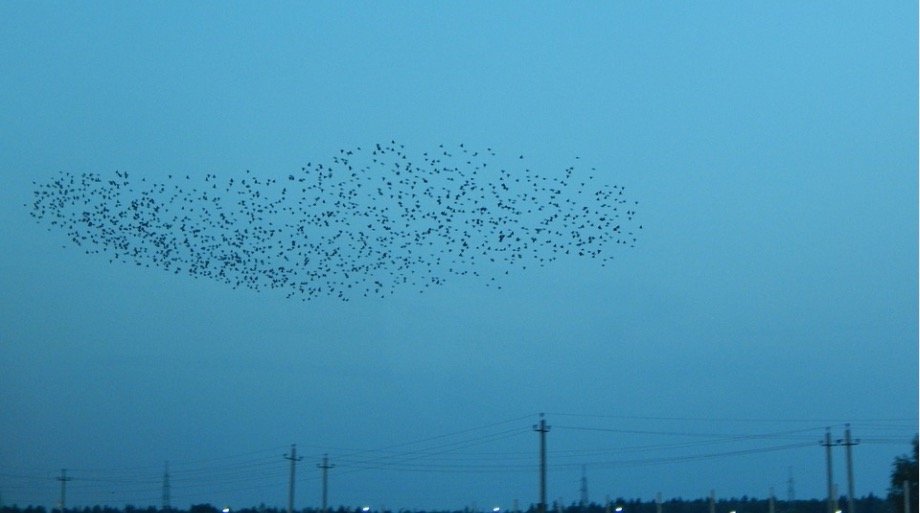
Table of Contents
What is Starling Murmuration?
Murmurations of starlings are one of nature’s most fascinating and brilliant spectacles. As hundreds of birds swirl together in one giant throbbing creature, they’ve been characterized as ethereal, even eerie.
Starling murmurations are not as prevalent as they once were, but there are still several murmuration hotspots where birdwatchers go each year in the hopes of getting a glimpse of this amazing natural performance.
So, what exactly are starling murmurations, and how do they come to be?
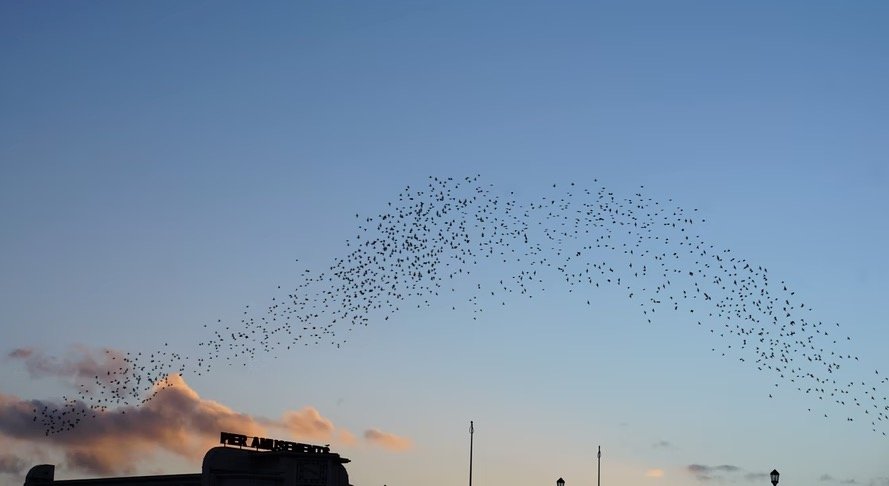
Starlings, like many other birds, congregate in large numbers at various periods of the year. The movement of the flock is what distinguishes a starling murmuration. Even though there are thousands of birds in a murmuration, they manage to fly in a collective mathematical synchronization that defies scholars to this day.
Murmurations often occur from November to March, when the birds are roosting together during the winter. Wintering starlings roost communally, cramming themselves into their roosts. They congregate in enormous numbers to fly into their secure winter homes as one giant flock – this is when they create a murmuration.
This page will explain what murmurations are, how they arise, and other fascinating facts about these remarkable displays.
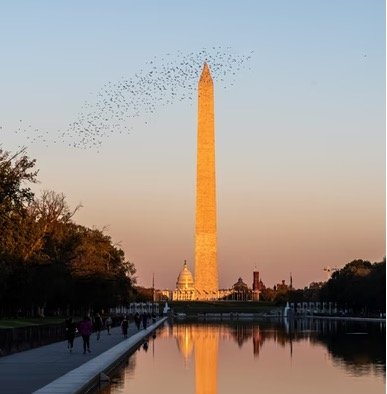
Why do starlings murmurate?
Murmurations have long piqued the interest of ornithologists. To begin with, starlings roost in groups. Prior to roosting, starlings must form a big flock, which begins tiny and expands into the hundreds, thousands, and perhaps millions.
A starling roost may include 500 birds per cubic metre, with the whole roost population numbering in the millions. This allows birds to exchange body heat and make the most of their preferred safe roosting locations.
The spinning murmuration aids the flock as it gains pace. Starlings avoid and fend off predators, which is one of the reasons why they murmurate. Murmurations fascinate predators in the same way they are dazzling humans.
Starlings are social birds that flock together not just to roost and make murmurations, but also to feed. Starlings prefer to depart their roosts all at once in the morning, generally between 6:30 and 7:30 a.m., which is a magnificent and bright sight in and of itself.
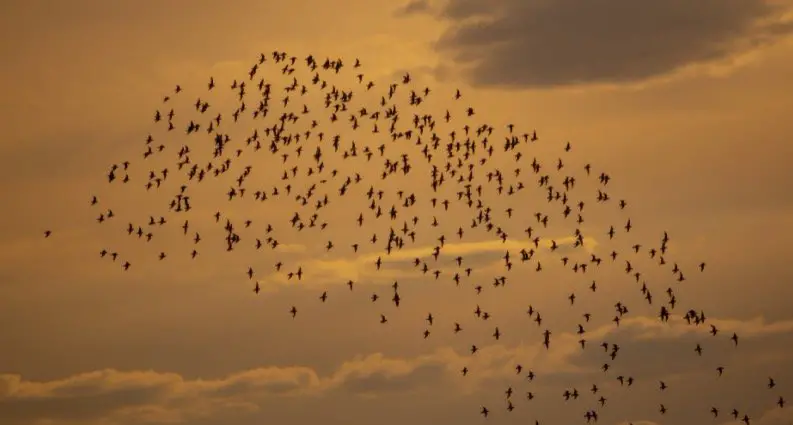
How does a starling murmuration stay in formation?
Individual birds in the murmuration may reach speeds of up to 90 miles per hour, yet they never collide. Rather, they fly in perfect unison with near-perfect mathematical accuracy, but how?
The most persuasive evidence is that each starling in the flock communicates with just a few other starlings, most likely 6 or 7, and follows their signals and mimics their motions in a process known as ‘scale-free correlation.’
When one bird moves, its closest neighbours follow suit, and so on, creating a wave-like movement that ripples throughout the flock. This is analogous to how particles flow in an avalanche.
Each individual particle’s movement is inextricably related to the movement of another neighbouring particle. It’s unknown how or why starlings developed to do this, and there are very definitely additional levels of significance to be uncovered.
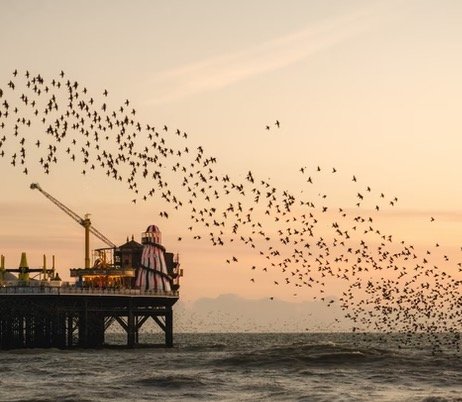
Why is it called a murmuration of starlings?
The act of muttering is referred to as murmuration. A murmur is a low sound, similar to a rumble. If you’re ever fortunate enough to be within hearing distance of a starling murmuration, you’ll be able to hear the delicate beating of wings that sounds like muttering. This whispering sound is how starling murmurations got their name.
When do starlings murmurate?
The earliest murmurations occur as birds congregate over their roosts; starling flocks in the UK are likely to be joined by starlings migrating from colder regions of Europe. Roosting may begin as early as September and last until February or March.
During this time, murmurations may occur each evening before starlings fly into their roosts for the night. Starlings often flock together every night during the colder months, when they roost communally, which means you have more than one night a year to capture a murmuration.
They leave the roost in the morning to eat and return later that evening. A starling murmuration, on the other hand, does not occur every night because there must be a sufficient number of starlings to create a murmuration.
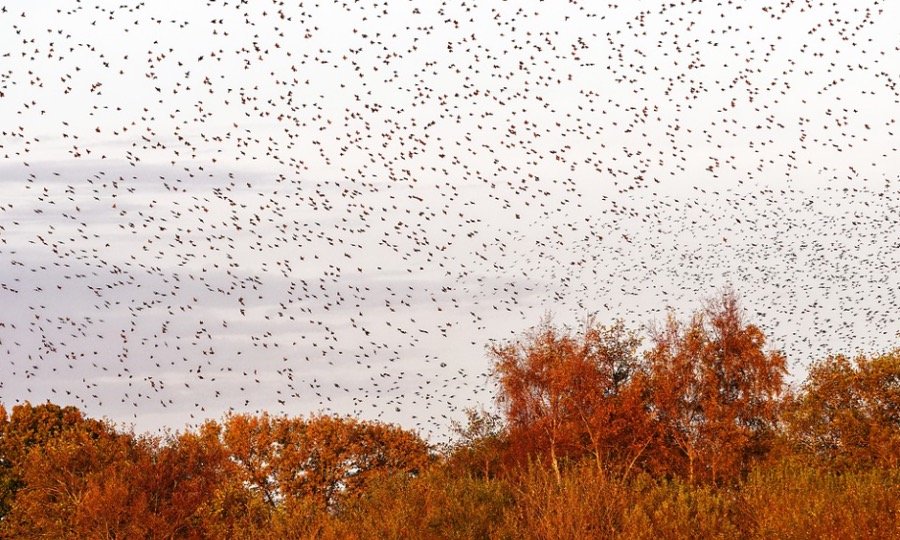
What months do starlings murmurate?
When winter arrives in the UK, much of Europe, and North America, starlings begin to murmur. A very cold stretch in September may cause starlings to roost sooner than normal, although this is more typical from November to February or even March on colder years.
What times of day do starlings murmurate?
Starlings prefer to murmurate around nightfall, while there is still some light. Dusk is the transition from sunset to nighttime, and it grows earlier as the winter advances until the December solstice, when it begins becoming later again. If you want to see a murmuration, go out an hour before sundown and wait patiently until the sun sets.
Do starlings only mumurate once?
When there are enough starlings in the flock, starlings may create murmurations each night before they move into their winter roosting place.
However, there aren’t always enough starlings to make a murmuration, so you won’t witness one every night. You do, however, have more than one opportunity every year!
Where to see a murmuration of Starlings?
Starlings may only be seen close or above their roosting areas. Starlings like to roost in deep woodlands, dense fields, reed-infested rivers and lakes, and man-made buildings. A starling roost must be large enough to hold the whole flock and be protected from terrestrial predators.
How long do starling murmurations last?
Murmurations of starlings may last up to 45 minutes, while others only last a few minutes. The conclusion of a murmuration is frequently abrupt – something will appear to cause the birds to pour into their roosts, which is a beautiful sight in of itself. Larger murmurations may split into various groups that join the roost at different times.
How many starlings in a murmuration?
A significant murmuration will include at least 500 to 1,000 birds. Smaller flocks may generate ephemeral murmurations, although these may only last a few seconds.
A big murmuration of starlings might number in the millions. Millions of birds have been counted in murmurations seen at Shapwick Heath, Somerset.
Do only starlings murmurate?
The name murmuration applies primarily to starling flocks, while many other species create enormous aerial groups. Starlings are the only birds that generate this distinctive pulsing pattern known as a murmuration, hence they are the only birds that murmurate.









